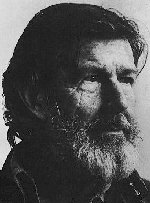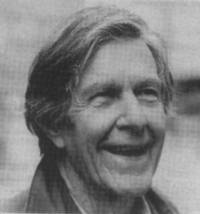

He left Pomona College early to travel in Europe (1930-31), then studied with Cowell in New York (1933-4) and Schönberg in Los Angeles (1934): his first published compositions, in a rigorous atonal system of his own, date from this period. In 1937 he moved to Seattle to work as a dance accompanist, and there in 1938 he founded a percussion orchestra; his music now concerned with filling units of time with ostinatos (First Construction (in Metal), 1939). He also began to use electronic devices (variable-speed turntables in Imaginary Landscape no.1, 1939) and invented the 'prepared piano', placing diverse objects between the strings of a grand piano in order to create an effective percussion orchestra under the control of two hands. He moved to San Francisco in 1939, to Chicago in 1941 and back to New York in 1942, all the time writing music for dance companies (notably for Merce Cunningham), nearly always for prepared piano or percussion ensemble. There were also major concert works for the new instrument: A Book of Music (1944) and Three Dances (1945) for two prepared pianos, and the Sonatas and Interludes (1948) for one.
 During
this period Cage became interested in Eastern philosophies, especially
in Zen, from which he gained a treasuring of non-intention. Working to
remove creative choice from composition, he used coin tosses to determine
events (Music of Changes for piano, 1951), wrote for 12 radios (Imaginary
Landscape no.4, also 1951) and introduced other indeterminate techniques.
His 4'33" (1952) has no sound added to that of the environment in
which it is performed; the Concert for Piano and Orchestra (1958)
is an encyclopedia of indeterminate notations. Yet other works show his
growing interest in the theatre of musical performance (Water Music,
1952, for pianist with a variety of non-standard equipment) and in electronics
(Imaginary Landscape no.5 for randomly mixed recordings, 1952; Cartridge
Music for small sounds amplified in live performance, 1960), culminating
in various large-scale events staged as jamborees of haphazardness (HPSCHD
for harpsichords, tapes etc, 1969). The later output is various, including
indeterminate works, others fully notated within a very limited range of
material, and pieces for natural resources (plants, shells). Cage also
appeared widely in Europe and the USA as a lecturer and performer, having
an enormous influence on younger musicians and artists; he wrote several
books.
During
this period Cage became interested in Eastern philosophies, especially
in Zen, from which he gained a treasuring of non-intention. Working to
remove creative choice from composition, he used coin tosses to determine
events (Music of Changes for piano, 1951), wrote for 12 radios (Imaginary
Landscape no.4, also 1951) and introduced other indeterminate techniques.
His 4'33" (1952) has no sound added to that of the environment in
which it is performed; the Concert for Piano and Orchestra (1958)
is an encyclopedia of indeterminate notations. Yet other works show his
growing interest in the theatre of musical performance (Water Music,
1952, for pianist with a variety of non-standard equipment) and in electronics
(Imaginary Landscape no.5 for randomly mixed recordings, 1952; Cartridge
Music for small sounds amplified in live performance, 1960), culminating
in various large-scale events staged as jamborees of haphazardness (HPSCHD
for harpsichords, tapes etc, 1969). The later output is various, including
indeterminate works, others fully notated within a very limited range of
material, and pieces for natural resources (plants, shells). Cage also
appeared widely in Europe and the USA as a lecturer and performer, having
an enormous influence on younger musicians and artists; he wrote several
books.